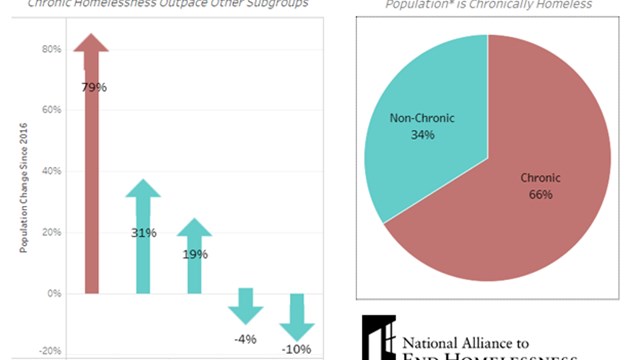Imagine the panic that sets in when a home is lost or damaged. Now imagine navigating through that fear alone. Whether it’s fire or flooding or the violent effects of a storm, anything that damages or destroys a home will have a lasting and dramatic effect on the people who lived and worked in that space.
Sometimes making the insurance claim that’s meant to return to people the financial and physical security they need can add just as much stress to the situation as the original disaster. Panicked, a homeowner might not realize how much coverage they truly have or how much is due to them from that claim. One of the best ways to avoid this problem is to enlist the aid of a public insurance adjuster.
Although public insurance adjusters are less well known to the average insurance customer than insurance agents or brokers, they have played a vital role in the insurance process since nearly day one. When trouble hits, adjusters will step in as advocates of the insured, working with insurance companies to get a fair and accurate settlement for their client. With extensive knowledge and training, adjusters are ideally suited to serving as a go-between among individuals or businesses and the insurance companies, helping people navigate the sometimes-tricky world of policies and settlements.
Ultimately, adjusters ensure that their clients receive all of the compensation to which they are entitled—a valuable service when people depend on these resources to rebuild their futures.
Stepping Into the Fray
Typically, an adjuster can be called in to help with a situation anywhere from two minutes to two years after the fire has cooled or the floodwaters have receded. As soon as the dust settles after an accident or incident, policyholders should consider calling an adjuster.
“We get involved in the process almost immediately,” says David Barrack, executive director of the National Association of Public Insurance Adjusters (NAPIA). “We’re there as soon as the property is damaged or as soon as the client calls us.” Adjusters can lend a hand in a variety of instances ranging from flood, collapse, fire or explosions to hurricane and wind damage, riot or civil unrest, smoke damage and vandalism or theft, according to the NAPIA website.
Once the adjuster is on the job, he or she will attend to an enormous range of tasks. “We’ll come in and review the policy to see what coverages are applicable,” says Roger Septoff, New York regional manager for Adjusters International. “We’ll then follow the procedures to mitigate other damages by boarding up windows or taking care of water removal.”
The adjuster will then begin the measurement process to assess the level of damage. “We’ll bring someone in to see what it will take to get the home back to its original shape, to how it looked the day before the event,” says Septoff. The adjuster also will do an inventory of the home, and will even set up accommodations for displaced families, arranging for hotel stays and other necessities.
“We try to measure appropriately,” Septoff says, adding that sometimes one party sees and perhaps values losses differently from another. It often can take an outside expert—someone divested from the emotional or purely financial aspect of the situation—to come in and render an evaluation that will suit both sides.
Having an adjuster in the mix can also help speed up the process. As an insurance expert, the adjuster will speak the same language as the insurance company or agent. Septoff says that although the adjuster works for the client, the insurance company often will welcome the adjuster because it smoothes the process and eases communication problems.
“For homeowners, to have a professional advocate on their team can be most beneficial,” Septoff says. “It’s a necessary part of the process.” And while many people will insist they can go it on their own, it’s important to remember that even if something can be done, going the self-sufficient route isn’t always the most prudent in the long run. “People could operate on themselves, too, but it’s not advisable,” Septoff says.
When policyholders face the hard facts of home damage or other issues and find themselves turning to an adjuster, they will not have to worry about paying their adjuster out of pocket. Most adjusters are paid out of the funds recovered from the insurance company, taking an agreed upon percentage of the payout.
Ready to Get in the Ring
Adjusters undergo many years of training, similar to insurance agents and other insurance professionals. “We learn insurance practices, have knowledge of policies and state laws,” Barrack says.
Organizations such as NAPIA provide professional training and certification. Just to become a member of the organization requires two years of full-time, on-the-job experience.
To become a certified professional public adjuster (CPPA) requires five years of experience, a college degree and the ability to pass an exam. With ten years of experience, people are eligible to become senior professional public adjusters (SPPA). Every state is different, however, and some require proof of continuing education courses in order for adjusters to maintain their licenses. “We do a lot to try to assure the public that they have qualified practitioners working for them,” says Barrack.
“You have to know the business,” Septoff says, adding that an ability to interpret policy is imperative, while having a background in sales and finance might be helpful as well. New York happens to be one of the states that requires proof of continuing education in order to retain a license, so taking classes and keeping up with the latest industry developments is also a must.
Luxury Or Necessity?
Some in the insurance industry would argue that adjusters are more of a helpful, once-in-a-while measure rather than a necessity for each and every policyholder.
“We use adjusters very infrequently—usually only when a loss is relatively large and complicated,” says Alex Seaman of HUB International Northeast, an insurance firm in Woodbury, Long Island. “Otherwise, there’s no real reason why claims can’t be settled between the carrier and the policy holder.”
An adjuster can be helpful, Seaman says, in handling the paperwork and explaining the finer points of a policy to the policyholder. He cautions, though, that sometimes “having an adjuster can be counterproductive. There’s no reason to pay a fee to the adjuster if you don’t have to.”
There’s a possibility, too, that adding a third party to the client/insurer relationship could complicate matters. “An insurance carrier might assume you’re looking for something that perhaps you’re not entitled to under your policy,” perhaps creating a sense of mistrust, Seaman says. “But if a claim is very large and complicated, it can be very helpful to have an adjuster involved.”
Most adjusters, however, feel that their role is to bring harmony to the relationship between the carrier and the insurer. Sometimes the most challenging part of the job is just trying to get everyone on the same page, Septoff says. “We try to bring clients the whole picture and not just part of it. We want to try to open their eyes.” And he adds that often insurers are happy to have them there to help interpret the facts and figures.
Ultimately, it’s up to each individual to decide whether or not they need an adjuster. “Most people think they’ll never suffer a disaster and will never need an adjuster,” Septoff says. And people who do suffer losses do not always have to make that decision right away. Sometimes individuals will make panicked calls to an adjuster the night the catastrophe hits. Others will not turn to a professional unless they become unhappy with their insurer after a lengthy period of time. Whatever the situation, the adjuster can step in if the individual decides they need assistance.
For the most prudent, organized folks out there, having the number of an adjuster side-by-side with their policy in their home lockbox could be helpful in the future. They can find a good adjuster by referencing professional sites such as the one maintained by NAPIA (www.napia.com). “It doesn’t hurt to become informed and to become familiar with an adjuster in your area,” Barrack says. “It’s never a bad idea to be prepared.”
The Human Factor
For many adjusters, the hardest part of their job often turns out to be the most rewarding. Interacting with individuals and families who have just suffered great loss can be hard, as it was for the thousands of adjusters who worked with victims of Hurricane Katrina this past year.
“Dealing with the insured at a time of loss can be a difficult proposition because of that loss—perhaps even the loss of family members,” Barrack says. “So there are personal issues” involved in the job.
At the same time however, working with those families can make the whole process worth it. “The most rewarding part of the job is satisfying the client and helping them get back on their feet,” Septoff says. “Knowing that a homeowner is back in their home, living a normal life again, is very rewarding.”
For the homeowner, it helps to know that someone is out there doing what they can to get them back home and living that normal life again. With the backing of an insurance agent and the helpful guidance of an adjuster, the pain of home damage or less should only be temporary. Working together, the adjuster should have the homeowner and their family back on the road to recovery and heading in the direction of a very happy ending. n
Liz Lent is a freelance writer and a frequent contributor to The Cooperator.






Leave a Comment